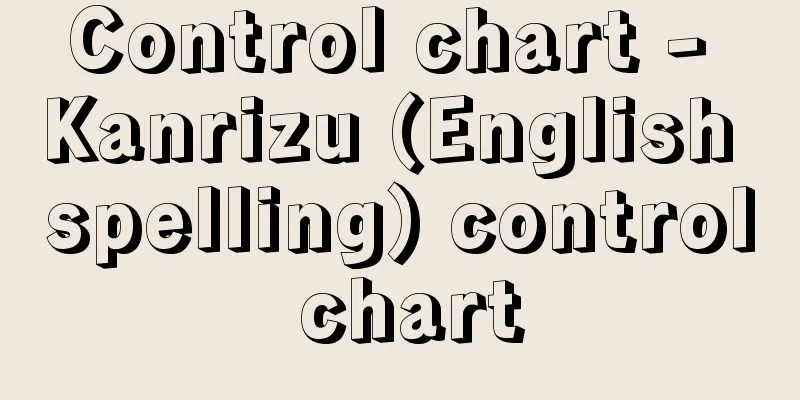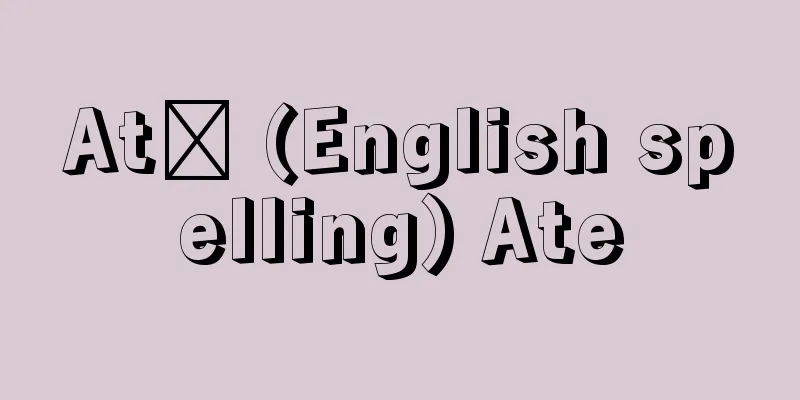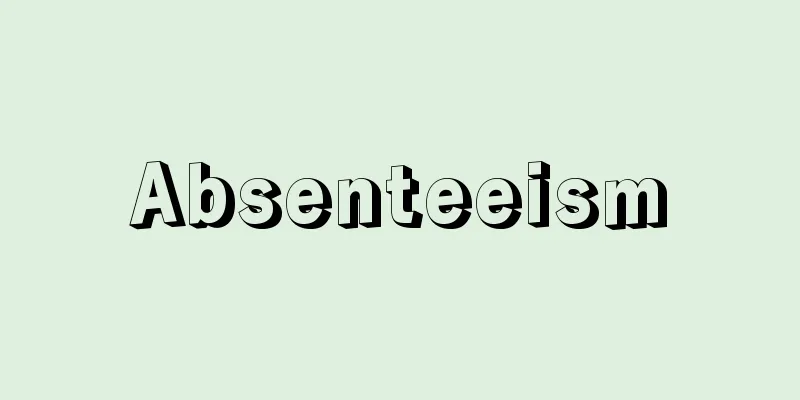Laughter - Warai (English spelling)

|
Generally, it is a pleasant emotional response accompanied by a certain facial movement that coordinates a series of facial muscles. There are various types of laughter, including smiles, laughter, bitter smiles, sneers, derision, and snickers. Smiling already appears in infancy, and initially occurs when the baby is satisfied with feeding, but eventually social smiles appear, triggered by stimuli from others. After a while, babies also begin to laugh out loud in response to sudden physical stimuli. Laughter can also be classified as follows: (1) laughter caused by physical stimuli, (2) laughter of joy, (3) laughter of humor, (4) laughter to hide embarrassment, (5) laughter as a performance, and (6) pathological laughter. Physical stimulation is the case of tickling, which can be seen in infants and is incorporated into play in young children. Laughter due to physical stimulation and laughter of joy are considered to be the prototypes of laughter, as they are seen in monkeys other than humans, along with laughter of joy, which is a reaction associated with the emotion of happiness. Laughter of amusement is broadly divided into three types: wit, comic, and humor. Laughter of embarrassment refers to laughing to hide embarrassment when making a mistake in front of others. A typical example of laughter as a performance is laughter when greeting someone, where a person may smile at others even though they are neither happy nor funny. Pathological laughter can be seen in schizophrenia (mental schizophrenia), and includes Leeres Lachen (German), which is a type of empty laughter where others do not understand why the person is laughing, and laughing attacks, which are short epileptic laughs that appear for no reason. [Hanazawa Seiichi] Laughter and philosophyLaughter contains a wide variety of human content, and factors that cause it are thought to include physical and physiological causes, psychological causes, and relationships with others, and philosophers have been trying to define its nature since ancient times. In ancient times, there was a tendency to explain humor in relation to morality, and Aristotle tried to see humor in physiological or moral ugliness and inferiority, but this was already expressed in Plato's dialogues, in which he saw the humor in the ignorance of people who believe their virtues to be superior to their actual ones. Plato's consideration of laughter as a mixture of jealousy and pleasure, based on interpersonal relationships, further changed in modern times, and it was thought that laughter comes from seeing something inferior or imperfect in others in comparison with oneself, and feeling one's own superiority in that (Hobbes, Descartes). If laughter is caused by comparing oneself with others, then it is also the result of intellectual observation. Theories centered on this intellectual cognition include the view that laughter arises from the sudden grasp of a discrepancy between abstractly thought things and various real objects (Schopenhauer), and the position that laughter is expressed by the recognition of something reminiscent of an inanimate, mechanical mechanism in a living human being, the mechanization of life, and the replacement of something artificial with something natural (Bergson). Furthermore, laughter is a reaction that is expressed internally as the result of a certain mental process. Kant therefore states that laughter arises from the sudden dissolution of tense expectations into nothingness, that is, when a mind that has been tense with a certain expectation is suddenly relaxed and released. Furthermore, Freud's theory attempts to comprehensively explain the psychological processes that cause laughter, such as wit, humor, and humor, from the mechanism of the difference between the suppression and consumption of mental energy and the consumption of it. In any case, laughter requires the laugher to have a calm mind and to put a certain distance between himself and others. Laughter does not occur when one is driven by anxiety or fear, intense indignation, or deep pity or sympathy. Therefore, laughter is a reaction based on a sense of safety and freedom from danger, and is an experience of personal pleasure within that environment, and an expression that relieves discomfort. [Keiichi Yoshizawa] Laughter and AnthropologyLaughter is a physiological social phenomenon that expresses emotions such as joy, anger, sadness, and happiness. It is considered to be unique to humans, and its nature has been widely discussed since ancient times. For example, Hobbes argued that laughter is a feeling of superiority felt when one suddenly recognizes one's superiority, Bergson argued that laughter occurs when life, which should be fluid, becomes rigid and mechanized, and Freud viewed laughter dynamically from the perspective of saving mental energy consumption. In recent years, there has also been a movement to summarize these points and understand laughter in a comprehensive manner. In other words, it is assumed that humans interact with the world through a broad framework, and when this framework is disrupted by a sudden event, the mental energy that maintained the framework is released, resulting in laughter. It is argued that while laughter continues, the reality of the framework is physiologically erased. Turning our attention to laughter in society, laughter is ritually institutionalized in many cultures in various ways. A typical example is the so-called joke relationship. The Gogo people, a patrilineal ethnic group in Africa, laugh and tell jokes with a mixture of affection and hostility when they meet their grandfathers and mothers, who are related to group classification, legal authority, and status. This kind of laughter is deeply connected to the social framework that classifies and ranks people, and it separates and connects groups that form the basic order of the community and groups outside the order that realize a collective consciousness. In that sense, such laughter is a kind of boundary situation, and it can be said to realize a cosmological expanse. Laughter is indeed a connecting point between the mind, body, and society, and is a basic requirement of life. [Yasuyuki Nagabuchi] Comparative behavioral study of laughterLaughter is a mental and physical movement that expresses cheerful emotions such as happiness and humor. The mental content that causes laughter and the physical movements that manifest it are extremely complex. In English, laughter accompanied by vocalization is called "laugh" and laughter without vocalization is called "smile." In Japanese, the latter is called "emi" and the former is called "warai" in the narrow sense. Although anger and sadness can be seen in animals other than humans, humans are the only animals that can laugh because laughter is not common. However, chimpanzees can smile in a kind of human-like way. Also, the urine of a female horse in heat gives off a unique odor, so male horses make a unique facial expression by widening their nostrils to absorb more of the odor. This is called a horse laughing (Flehmen). Dogs express joy with their whole body, including their tails, but their facial muscles are simple and do not show movements that correspond to human laughter. [Shise Kahara] The origin of laughterAccording to the Dutch ethologist JARAM van Hooff, smile and laugh have separate origins in pre-human monkeys. When in a difficult position, monkeys pull their lips to the side and show their teeth to show submission, defense, or abandonment of hostility. They may squeak or remain silent, which develops into a display of affection, similar to the human smile, but can also turn into a submissive, fawning, or flattering laugh. On the other hand, a threatening monkey may open its mouth wide and glare, and in the next stage make an ooh or ahh sound to show superiority over the other, which is the development of the human laugh. When humans laugh loudly, it is considered to be highly aggressive. Among children, submissive children who are trying to make friends with arrogant children are more likely to laugh than dominant children who are trying to make friends with weaker children. This suggests that when a human desires friendship and smiles at others, it is not so different from when a monkey simply bares its teeth at a frightening creature. Laughter is usually noticeable on the face. It is expressed by words such as a grin, a grin, or a smile, and is produced by the movement of the facial muscles. As the laughter intensifies, the mouth opens slightly, the corners of the mouth are pulled outward, the eyes narrow, and wrinkles form at the corners of the eyes. As the emotion becomes stronger, breathing movements are added to the laughter. The diaphragm contracts intermittently, causing short exhalations and sounds. In Japanese, it is expressed as hahaha, hohoho, fufufu, hehehe, and hihihi, which move from open to restrained and from emotional to artificial. In these laughs, the face is turned slightly upward, but in reserved laughs the face is turned downward and a subdued cooing sound is produced. In both Japanese and English, various types of laughter are expressed by onomatopoeia. When we laugh naturally, such as involuntary laughter, roaring laughter, or laughter, the face usually moves symmetrically, but when we laugh artificially, such as a wry smile, derisive laugh, or fawning laugh, the facial movements become asymmetric. Laughter is universal to all human beings and is a physical expression of a high level of spirituality, but the way it is expressed varies depending on the culture of each society. Laughter is highly social; we don't laugh much when we are alone, but when there are others around, our laughter becomes louder and spreads. It also produces polite laughter. Westerners change facial expressions quickly, while Japanese laughter lasts longer and is often called an Oriental smile. Japanese people deal with their own failures that Westerners would make by clicking their tongues with a shy laugh. Differences in laughter are often the source of misunderstandings between people of different cultures, which is often caused by a lack of mutual understanding between cultures. [Shise Kahara] "Laughter" by Bergson, translated by Hayashi Tatsuo (Iwanami Bunko) " ▽ "Critique of Judgment, Vol. 1, by Kant, translated by Onishi Katsunori (Iwanami Bunko)" ▽ "Wit: Its Relation to the Unconscious, translated by Katsuyuki Kakeda et al. (included in Freud's Collected Works 4, 1970, Jinbun Shoin)" ▽ "The Book of Faces" by Kohara Shise (1986, Kodansha)" ▽ "Comparative Ethology" by I. Eybl-Eibesfeld, translated by Itani Junichiro and Minokuchi Tan (1978, Misuzu Shobo) [References] | | |Source: Shogakukan Encyclopedia Nipponica About Encyclopedia Nipponica Information | Legend |
|
一般には、一連の顔面筋を共動させる一定の表情運動を伴う快適な情動反応をいう。笑いには、微笑、哄笑(こうしょう)、苦笑、冷笑、嘲笑(ちょうしょう)、失笑などさまざまなものがある。微笑は乳児期にすでに出現するもので、当初は哺乳(ほにゅう)の満足時に生じるが、やがて他人からの刺激によって引き起こされる社会的微笑が出現する。その後しばらくすると、物理的刺激を突発的に与えたりすることで哄笑するようにもなる。笑いは(1)身体への刺激による笑い、(2)うれしさの笑い、(3)おかしさの笑い、(4)てれ隠しの笑い、(5)演技としての笑い、(6)病的な笑い、のようにも分類できる。 身体への刺激とは、くすぐるような場合であって、乳児期にもみられるし、幼児では遊びに取り入れている。うれしいという情動に伴う反応であるうれしさの笑いとともに、人間以外のサルにもみられることから、身体への刺激による笑いとうれしさの笑いとは、笑いの原型と考えられている。おかしさの笑いは機知wit、滑稽(こっけい)comic、諧謔(かいぎゃく)humorの三つに大別される。てれ隠しの笑いは、人前で失敗したとき恥ずかしさを隠すために笑う場合をいう。演技としての笑いの代表は挨拶(あいさつ)における笑いであって、内心はうれしくもおかしくもないのに他人に微笑してみせることがある。病的な笑いには、統合失調症(精神分裂病)にみられることがあるもので、他人にはなぜ笑っているのか理解できない空笑(そらわら)いleeres Lachen(ドイツ語)や、笑うべき理由なしに現れるてんかん性の短い笑いである笑い発作laughing attackなどがある。 [花沢成一] 笑いと哲学笑いにはきわめて多様な人間的内容が含まれており、それを引き起こす要因として、身体的生理的原因や心理的原因さらに他人との関係が考えられ、哲学者は古くからその性質を規定しようとしてきた。古代には滑稽(こっけい)を道徳と関連して説明しようとする傾向があり、アリストテレスは生理的ないし道徳的な醜さ、劣悪さのなかに滑稽をみようとしたが、これはすでに自分の徳を実際以上に優れていると思い込む人間の無知に滑稽をみるプラトンの問答のなかに表されており、また笑いを嫉妬(しっと)の情に快感が混入しているとするプラトンの対人的関係を底流にした考察は、さらに変化して、近代になると自己との比較において他人のなかに劣ったもの、不完全なものをみて、そこに自己の優越性を感ずることが笑いになると考えられてくる(ホッブズ、デカルト)。 ところで、笑いが自分と他の人との比較によって生ずるとするなら、笑いは知的な観察の結果であるということにもなる。この知的な認知を中心にした理論として、笑いは抽象的に考えられた事柄と現実のさまざまな対象との間の不一致を突然把握することから生ずるとする見方(ショーペンハウアー)や、生きた人間において無生命的、機械的なメカニズムを思わせるようなものを認めること、生のメカニズム化、自然的なものになんらかの人為的なものが置き換えられることによって表されるとする立場(ベルクソン)がある。また、笑いは内面的にはある心的過程の結果として表される反応である。そこで、カントは笑いを、張り詰めた期待が突然無に解消することから生ずる、つまりある期待に緊張していた心が突如として緩められ、ほぐれてしまうことによって生ずるとする。さらに、笑いを引き起こす機知、滑稽、ユーモアなどの心理的過程を、心的エネルギーの抑制と消費、消費の違いのメカニズムから包括的に説明しようとするのがフロイトの理論である。とにかく、笑いには笑い手に平静な心が必要であり、他人や自分を一定の距離を置いてみることが条件になる。不安や恐怖に駆られていたり、激しく憤慨していたり、深い哀れみや同情の思いにつかれている場合には笑いは生じない。したがって、笑いは安全感や危険がないという感情を土台にした反応であり、そのなかでの個人の快さの体験であり、不快を紛らす表現であるといえよう。 [吉沢慶一] 笑いと人類学笑いは喜怒哀楽などを顔面に表出させる表現様式の一つであり、社会的な生理現象である。人間固有のものとされ、その本性については古来からさまざまに言及されてきた。たとえば、ホッブズは、笑いとは自己に突然卓越性を認めたときの優越感であると論じ、ベルクソンは、流動的であるべき生が、こわばり、機械化したときに笑いが生じるとし、フロイトは、心的エネルギー消費の節約という観点から笑いを力動的にとらえた。また近年、このような論点をまとめ、笑いを総括的に理解しようとする動きもある。すなわち、人間は広い意味での枠組みによって世界と接していると仮定し、この枠組みが突然のできごとによって混乱した際に、その枠組みを維持していた心的エネルギーが解き放たれて笑いが生じる。そして笑いが持続している間、その枠組みのもつ現実らしさが生理的に消し去られる、と論じる。 社会のなかでの笑いに目を転じれば、多くの文化において笑いは、さまざまな形で儀礼的に制度化されている。代表的な例は冗談関係joking relationshipといわれるものである。アフリカの父系の民族集団ゴゴの人々は、集団分類、法的権威、地位などにかかわる父方の人々に対して、祖父と母方の人々に出会ったときには、親しみと敵意の入り混じった冗談をいって笑い合うのである。このような笑いは、人間を分類し格づける社会的枠組みと深くかかわっており、共同体の基本秩序をなす集団と共同意識を実現する秩序外集団とを切り離すと同時に結び付けている。その意味でかかる笑いは一つの境界状況となっており、宇宙論的広がりを実現しているといえる。笑いは実に、精神、身体、社会の接続点なのであり、生の基本要件なのである。 [永渕康之] 笑いの比較行動学笑いはうれしさ、おかしさという陽気な感情を表す精神・身体運動である。笑いを引き起こす精神内容や、身体に表れた動きはきわめて複雑である。英語では発声を伴う笑いをlaugh、伴わないものをsmileと分けて用いるが、日本語では後者を笑(え)みとよび、これに対し前者を狭義の笑(わら)いとする。怒りや悲しみは人間以外の動物でもみられるが、笑いは一般的でないために、人間だけが「笑うことのできる動物」と称される。しかし、チンパンジーはある種の人間的な笑顔をつくる。また、発情した牝(めす)ウマの尿は独特な匂(にお)いを放つため、牡(おす)ウマはその匂いをより多く吸い込むように鼻孔を広げる独特の表情をつくる。これをウマが笑う(フレーメンFlehmen)という。イヌはしっぽなど、全身で喜びを表すが、顔の筋肉は単純であり、人間の笑いに相当する動きは示さない。 [香原志勢] 笑いの起源オランダの動物行動学者バン・フーフJ. A. R. A. M. van Hooffによれば、smile(ほほえみ)とlaugh(笑い)とは人間以前のサルに別々に起源をもつ。窮地に陥ったサルは唇を横に引き、歯をむき出して、服従、防衛、または敵対心放棄の心情を示す。この際キーキー鳴くこともあるが、声を出さないままのことがあり、これが親愛の情の表示に発展し、人間のsmileに通じるが、追従やへつらい、せじ(世辞)笑いに変ずることもある。一方、威嚇的な態度をとるサルは口を大きく開いてにらみ、次の段階でオーまたはアーと声を出し、相手に対し優越性を表すが、人間のlaughはこれが発展したものである。人間が高笑いをするときには、多分に攻撃的であるとみられる。子供たちの間でも、服従的な子がいばっている子と友達になろうとするときのほうが、優位の子が弱い子と仲よくしようとするときよりも、笑ってみせることが多い。そのことは、友好関係を願う人間が相手にほほえむのは、サルが恐ろしい相手にただ歯をむき出すのとそれほど違わないことを示唆する。 通常、顔に表れる笑いが目につく。それはにっこりとか、にやにやとか、また莞爾(かんじ)とかいうことばで表現されるが、いずれも表情筋の運動によってつくられる。その程度が強まるにつれて、口がやや開き、口角が外側方へ引かれ、目元が細くなり、目じりに皺(しわ)が寄る。感情がさらに強くなると、呼吸運動が笑いに加わる。横隔膜が断続的にけいれんすることにより、小刻みに呼気が発せられ、声を伴うようになる。日本語ではハハハ、ホホホ、フフフ、ヘヘヘ、ヒヒヒと表現されたりして、これらは開放的から抑制的なものへ、また情緒的から作為的なものへ移っていく。これらの笑いでは顔はやや上向きであるが、遠慮がちな笑いの際には顔は下を向き、クックックッと押さえた声が出る。日本語でも英語でも、さまざまな笑いは擬態語で表現される。思わず引き込まれた笑いとか、爆笑、哄笑(こうしょう)など、自然な笑いの際の顔は左右対称な動きを示すのが普通で、苦笑、嘲笑(ちょうしょう)、へつらい笑いなど、作為的な笑いの際には、顔の動きは非対称的になる。 笑いは人類に普遍的であり、その高い精神性が身体に表れたものであるが、その発現の仕方はそれぞれの社会のもつ文化によって異なる。笑いは多分に社会的であり、1人でいるときにはあまり笑わないが、他者がいると、笑いは大きくなり、伝播(でんぱ)する。また、愛想笑いが生まれる。欧米人は表情の切り替えが早く、一方、日本人の笑いは長く残り、しばしばオリエンタル・スマイルとよばれる。欧米人が舌打ちするような自己の失敗を、日本人はてれ笑いで処理する。笑いの違いはしばしば異文化間の人々の誤解のもととなるが、それはとかく文化の相互理解の不足によって引き起こされる。 [香原志勢] 『ベルクソン著、林達夫訳『笑い』(岩波文庫)』▽『カント著、大西克礼訳『判断力批判』上巻(岩波文庫)』▽『懸田克躬他訳『機知――その無意識との関係』(『フロイト著作集4』所収・1970・人文書院)』▽『香原志勢著『顔の本』(1986・講談社)』▽『I・アイブル=アイベスフェルト著、伊谷純一郎・美濃口坦訳『比較行動学』(1978・みすず書房)』 [参照項目] | | |出典 小学館 日本大百科全書(ニッポニカ)日本大百科全書(ニッポニカ)について 情報 | 凡例 |
<<: Laughing Kookaburra (English: laughing kookaburra)
Recommend
Koji Inogawa
…Ogino Kengyo, who was active in the mid-Edo peri...
The opening of the rocks - Isonokuchiake
The practice of restricting the harvesting of seaw...
Regulated verse
One of the styles of classical Chinese poetry. It...
Golden ground squirrel - Golden ground squirrel
...Eurasian ground squirrels and North American g...
Sidereal day
The time from the vernal equinox to its highest po...
Ouargla (English spelling)
Ouargla Governorate capital, which occupies the ea...
Pharmacy - yakkyoku
A pharmacy is a place where a pharmacist dispense...
Walpurgis
...It has been the setting for many folk tales si...
price imitation policy
...(2) includes (a) prestige pricing, which takes...
Lakedaimōn (English spelling) Lakedaimon
…An ancient Greek city located in the south of th...
Breaker (English spelling)Bräker, Ulrich
Born: December 22, 1735 in Nevis Died: September 1...
Babii Yar
A valley on the outskirts of Kiev, the capital of ...
SF Magazine - SF Magazine
...In France, many works similar to science ficti...
Brushing your teeth - Toothpaste
This refers to the cleaning action of the mouth an...
Crab cactus - Crab cactus
...It does not produce fruit easily, but when cro...









